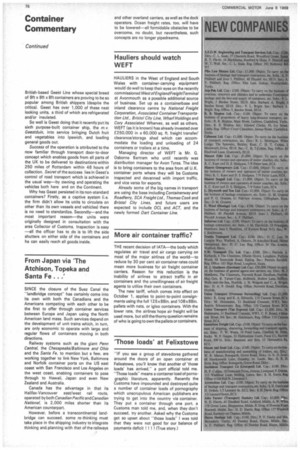Geest's secrets of success
Page 77

Page 78

If you've noticed an error in this article please click here to report it so we can fix it.
AS local hauliers will know, to their advantage. Ipswich is quite an up-and-coming port nowadays and, not to be outshone by its nearby "big brothers" Harwich and Felixstowe, containers are very much in evidence there. Dominating the scene is the Dutch-owned. British-based Geest Line whose special breed of 8ft x 8ft x 3ft containers are proving to be so popular among British shippers (despite the critics). Geest has over 1,000 of these neat looking units, a third of which are refrigerated and/or insulated.
So well is Geest doing that it recently put its sixth purpose-built container ship, the m.v. Geestduin, into service bringing Dutch fruit and vegetables into Ipswich, and loading general goods out.
Success of the operation is attributed to the now familiar through transport door-to-door concept which enables goods from all parts of the UK to be delivered to destinations within 250 miles of Rotterdam within 48 hours of collection. Secret of the success lies in Geest's control of road transport which is achieved in the usual way—by owning and operating the vehicles both here and on the Continent.
Why has Geest persisted in its non-standard containers? Firstly, as a captive system the firm didn't allow its units to circulate on other than its own vessels and vehicles) there is no need to standardize. Secondly—and the most important reason—the units were originally designed in consultation with the area Collector of Customs. Inspection is easy —all the officer has to do is to lift the side shutters on either side of the containers and he can easily reach all goods inside.


























































































































